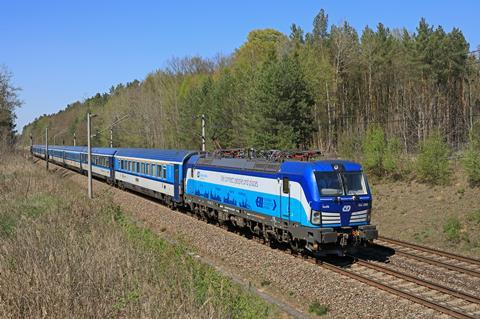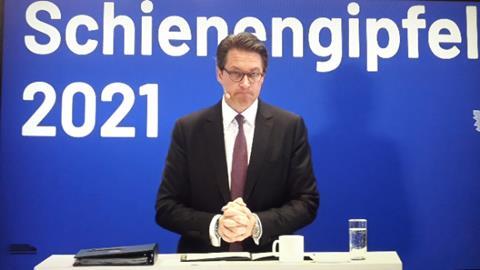
GERMANY: Plans for a dramatic acceleration of inter-city passenger services between the capital cities of Germany, the Czech Republic and Austria were outlined at the third German Rail Summit held virtually on May 17.
Federal Transport Minister Andreas Scheuer highlighted plans agreed by the three countries in the Via Vindobona trilateral treaty for a combination of upgraded routes and sections of new high speed line that would permit a Berlin – Wien timing of around 5 h, with limited stop ‘Express’ services achieving 4 h, compared to the current fastest of around 8 h 15 min. The Berlin – Praha journey time would be cut to 2 h 30 min and Dresden – Praha to around 1 h.

At the heart of the scheme is the 30 km base tunnel under the Erzgebirge on the German-Czech border, for which a joint declaration was signed in March 2020. This is expected to be completed by the mid-2030s, as part of a 123 km high-performance railway between Dresden and Praha, cutting the distance by around 56 km.
In his message to the Summit delegates, Czech Transport Minister Karel Havlíček said he was keen to introduce two-hourly services to the neighbouring capitals, increasing to an hourly service in the longer term.
Austrian Climate Minister Leonore Gewessler promised in her message that a start would be made next year on a €1bn upgrade of the 66 km Nordbahn between Wien and the Czech border at Bernhardsthal.
The Vindobona branding reflects the name chosen in 1957 for a flagship Berlin – Wien F-Zug express service, which was initially operated with a five-car VT175 diesel railcar set by Deutsche Reichsbahn in conjunction with the national railways of Czechoslovakia and Austria; this offered a southbound journey time at launch of 11 h 38 min. The service survived in various forms using different types of rolling stock until 2014 and in 2020 the name was revived for an ÖBB Railjet service linking Berlin and Graz via Dresden, Praha and Wien.
The Via Vindobona agreement dovetails with the virtual signing by Europe’s transport ministers of a formal Letter of Intent to support the wider TEE 2.0 programme, which envisages the development a network of high speed regular-interval day and night passenger services connecting Europe’s major cities.

















